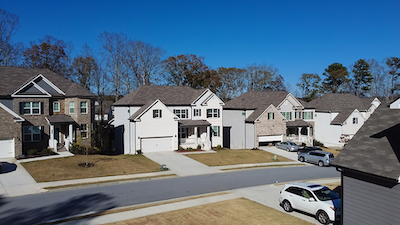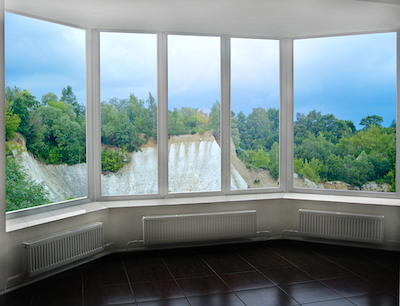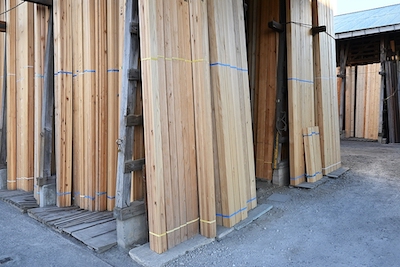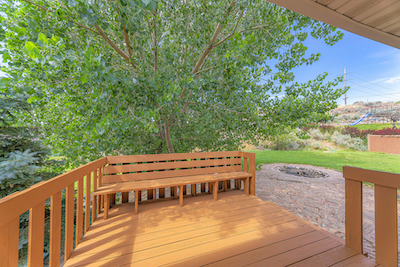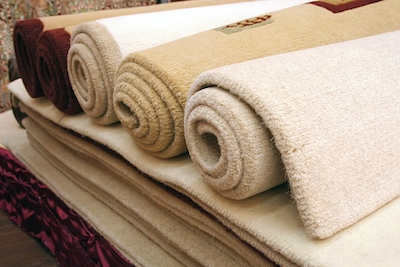Choosing the right siding material for your home is an important decision, as it significantly affects the overall appearance, durability, and long-term maintenance costs of your property. Two of the most popular choices among homeowners are brick and vinyl siding, each with its own set of advantages and drawbacks. In this article, we will explore the differences between brick and vinyl siding to help you make an informed decision for your home’s exterior.
Aesthetics
Brick Siding:
Brick siding exudes a timeless charm that has made it a popular choice for centuries. Available in a wide range of colours, textures, and styles, brick can be tailored to suit traditional or contemporary home designs. Moreover, brick siding ages gracefully, with its appearance often improving over time as it develops a unique patina.
Vinyl Siding:
Vinyl siding is an attractive option for homeowners seeking a low-maintenance material with a modern look. This type of siding comes in a vast array of colours, styles, and textures, enabling homeowners to customize their exteriors to match their personal tastes. However, vinyl siding may fade or warp over time, requiring periodic replacement or repair to maintain its appearance.
Durability and Longevity
Brick Siding:
Brick is an incredibly durable and long-lasting material, with a lifespan of 50 to 100 years or more if properly maintained. It is highly resistant to most weather conditions, including heavy rains, hail, and strong winds. In addition, brick is fire-resistant and does not rot or become damaged by insects, making it an excellent choice for homeowners concerned about safety and structural integrity.
Vinyl Siding:
Vinyl siding is also a durable option, typically lasting between 20 to 40 years with proper care. However, it is more susceptible to damage from extreme weather conditions, such as high winds, hail, and extreme temperatures. Vinyl siding may also crack, warp, or fade over time, and can be susceptible to damage from insects or moisture if not properly installed and maintained.
Energy Efficiency
Brick Siding:
Brick is an energy-efficient material, providing natural insulation to your home due to its thermal mass. This helps maintain a consistent indoor temperature, reducing the need for heating and cooling systems, and lowering your energy bills. In addition, brick siding can be combined with additional insulation materials for even better energy efficiency.
Vinyl Siding:
Vinyl siding can also improve the energy efficiency of your home when installed with proper insulation. Some vinyl siding products come with built-in insulation or can be paired with an insulated backing. However, the energy efficiency of vinyl siding is generally considered to be lower than that of brick, as it lacks the same thermal mass properties.
Maintenance
Brick Siding:
While brick siding is relatively low-maintenance, it is not entirely maintenance-free. Regular inspections for signs of damage, such as cracked or loose bricks, are essential to ensure the longevity of your brick siding. Furthermore, brick may require occasional cleaning to remove dirt, mold, or mildew, and repointing (replacing the mortar between bricks) every 20 to 30 years.
Vinyl Siding:
One of the primary advantages of vinyl siding is its low-maintenance nature. Vinyl siding requires minimal upkeep, with only occasional cleaning needed to maintain its appearance. It does not need to be painted or stained and is resistant to rot, insects, and moisture. However, vinyl siding may need to be replaced or repaired if it becomes damaged, cracked, or warped over time.
Installation and Cost
Brick Siding:
Brick siding is more labor-intensive and time-consuming to install than vinyl siding, as each brick must be carefully laid by skilled masons. As a result, the cost of brick siding is typically higher than that of vinyl siding. The total cost of brick siding installation varies depending on factors such as the type of brick used, labor rates in your area, and the complexity of the project. However, given its durability and longevity, the higher initial investment in brick siding may be offset by reduced maintenance and replacement costs over time.
Vinyl Siding:
Vinyl siding is relatively quick and easy to install, which typically translates to lower labor costs. The overall cost of vinyl siding is generally more affordable than brick siding, making it an attractive option for budget-conscious homeowners. However, it is important to consider the potential long-term costs associated with vinyl siding, such as replacement or repair due to damage or fading, which may offset the initial cost savings.
Environmental Impact
Brick Siding:
Brick is a sustainable and environmentally friendly material, made primarily from natural clay and shale. The production of bricks requires a significant amount of energy, but modern brick manufacturing processes have become more energy-efficient, reducing the overall environmental impact. Additionally, bricks are recyclable and can be reused in other construction projects, minimizing waste.
Vinyl Siding:
Vinyl siding is made from polyvinyl chloride (PVC), a type of plastic derived from petroleum, which has a greater environmental impact than brick. The production of vinyl siding requires the use of non-renewable resources and generates greenhouse gas emissions. Furthermore, while some vinyl siding products are recyclable, they are not biodegradable and may contribute to landfill waste if not properly disposed of.
Resale Value
Brick Siding:
Homes with brick siding tend to have a higher resale value compared to those with vinyl siding. Brick is perceived as a premium, long-lasting material, which can increase the perceived quality and desirability of a property. Additionally, the timeless appeal of brick siding can make your home more attractive to potential buyers, potentially resulting in a faster sale.
Vinyl Siding:
Vinyl siding may not provide the same boost to resale value as brick siding, particularly if it has faded or become damaged over time. However, well-maintained vinyl siding can still be an asset when selling your home, particularly if the colour and style are appealing to potential buyers. Moreover, the low-maintenance nature of vinyl siding can be an attractive feature for some homebuyers.
When choosing between brick and vinyl siding for your home, it is essential to weigh the pros and cons of each material in relation to your specific needs, budget, and aesthetic preferences. Brick siding offers a classic, durable, and energy-efficient option that can enhance the resale value of your property, albeit at a higher initial cost. On the other hand, vinyl siding provides a more affordable, low-maintenance alternative with a modern appeal, though it may have a shorter lifespan and lower energy efficiency than brick.
Ultimately, the choice between brick and vinyl siding will depend on your priorities as a homeowner. By carefully considering the factors discussed in this article, you can make an informed decision that best suits your needs and enhances the beauty and functionality of your home.










